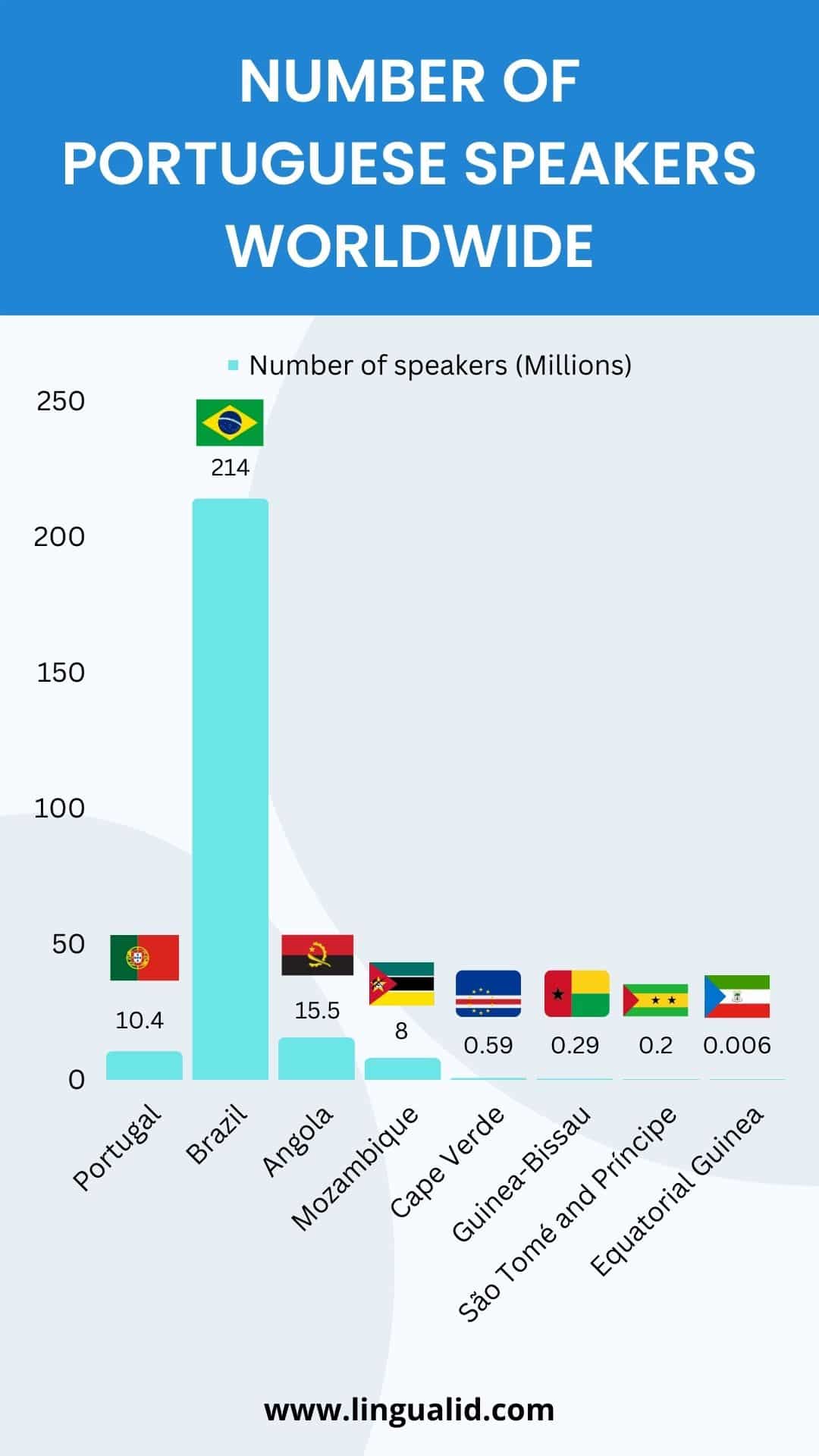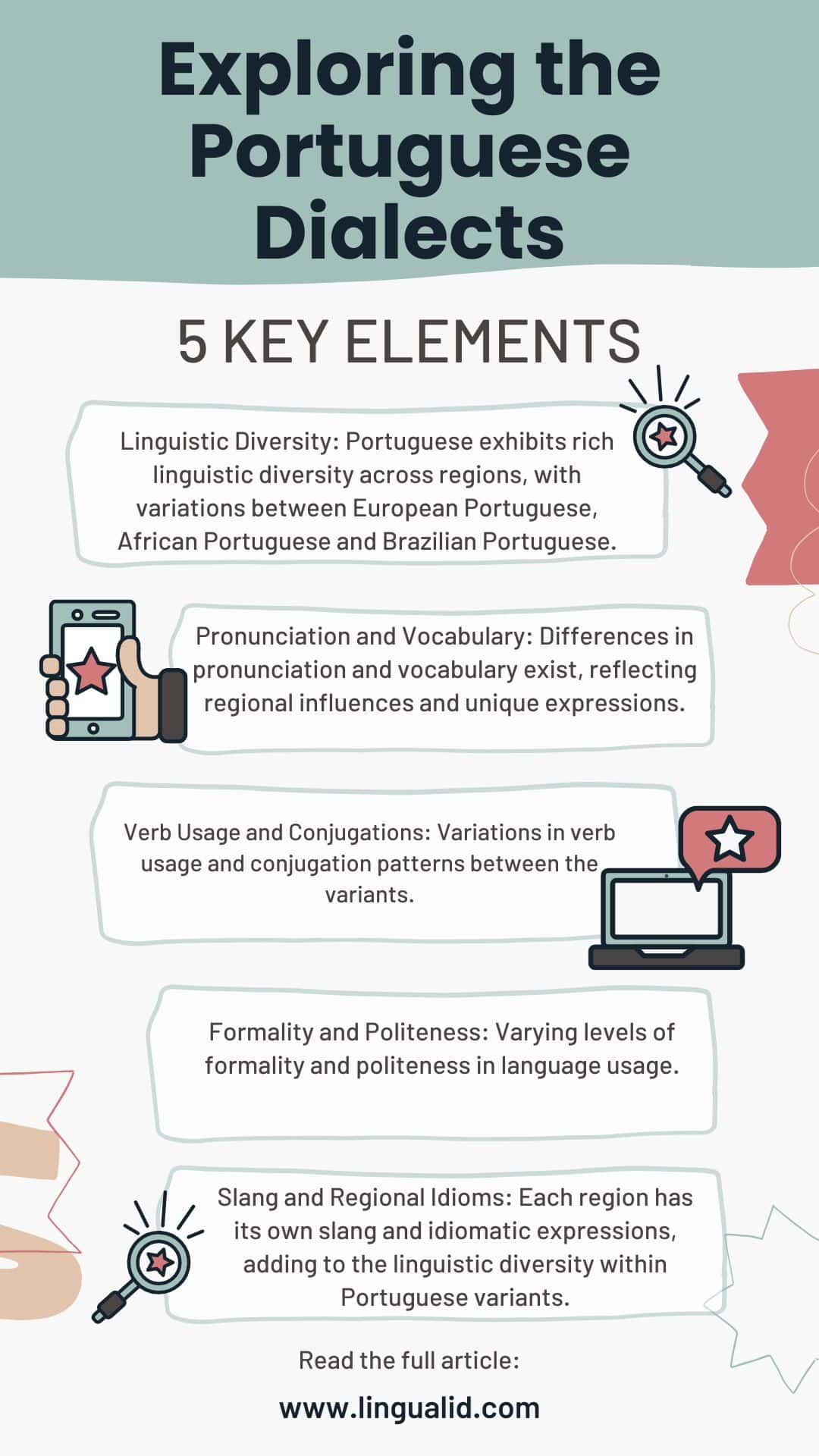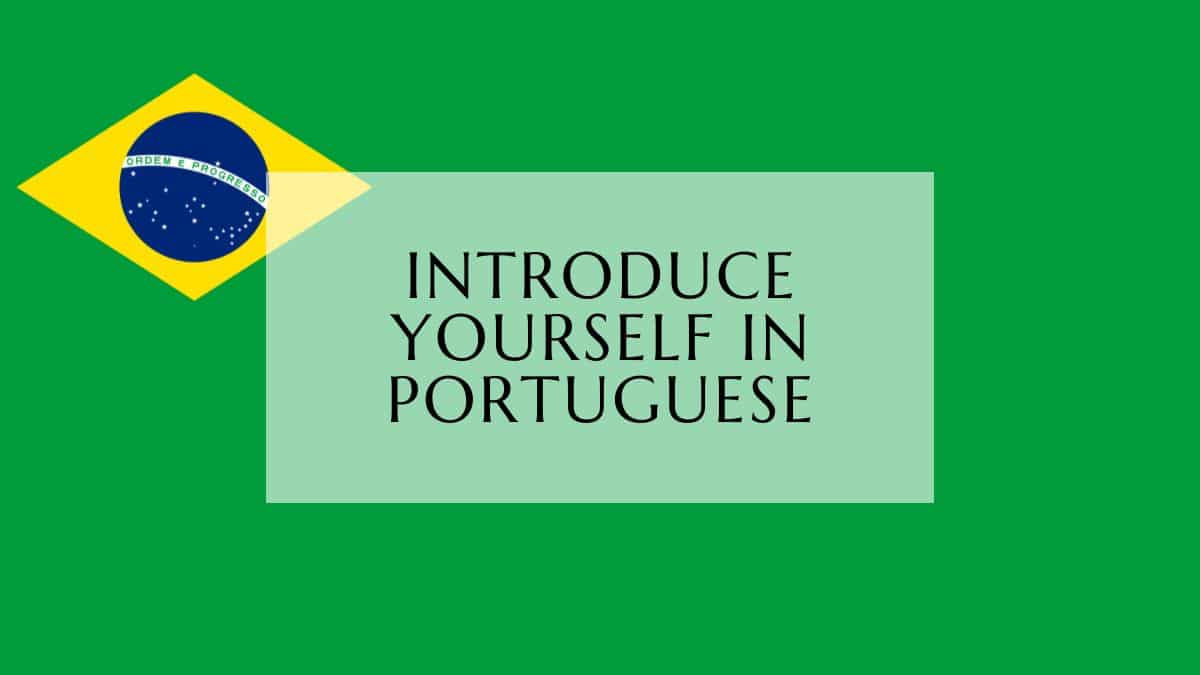Introduction
Portuguese, a Romance language, traces its roots back to the Iberian Peninsula. Over the centuries, it has evolved into diverse dialects, each influenced by history, colonization, and geography. In this article we will explore the different Portuguese dialects, highlighting their distinctive features, cultural significance, and the role they play in shaping identity.
- Introduction
- Origins of Portuguese Dialects
- European Portuguese
- Lusophone Africa
- Brazilian Portuguese: A World Of Varieties
- Carioca Accent (Rio de Janeiro): Melodious Rhythms and Beach Vibes
- Baiano Accent (Salvador): Rhythmic Cadence of Afro-Brazilian Heritage
- Paulistano Accent (São Paulo): Fast-Paced Clarity and Urban Efficiency
- Gaúcho Accent (Rio Grande do Sul): European Influences and Southern Charm
- Nordestino Accent (Northeast Region): Colorful Diversity and Cultural Fusion
- Mineiro Accent (Minas Gerais): Gentle Intonation and Warm Hospitality
- The Lure of the Atlantic Islands
- East Timor: A Unique Blend
- Preservation and Modernization
- Challenges and Impact on Communication
- The Melody of Dialects
- Future Prospects of Portuguese Dialects
- Conclusion
Key Takeaways
- Linguistic Diversity Unveiled: The Portuguese language exhibits remarkable diversity across regions, with each major dialect serving as a reflection of unique cultural influences, history, and geography.
- Cultural Resonance: Dialects in Lusophone Africa echo the continent’s history, intertwining indigenous languages, colonial legacies, and local expressions to create a linguistic tapestry of cultural heritage.
- Regional Identity: Brazilian Portuguese stands out for its regional diversity, from the melodic rhythms of Rio de Janeiro to the efficient clarity of São Paulo, showcasing how geography and culture shape language.
- Language as a Bridge: Portuguese dialects are bridges that unite communities, whether through the musical intonations of Salvador or the historic elegance of European Portuguese, offering a means to preserve traditions and connect with the world.
- Global Linguistic Journey: The journey through Portuguese dialects is an exploration of history, identity, and human connection, underscoring how language adapts to the winds of change while retaining the essence of its people.
Origins of Portuguese Dialects
The evolution of Portuguese dialects began with the foundation of the language itself. Emerging from medieval Galician-Portuguese, the language spread across different regions and continents, mingling with indigenous languages and foreign tongues.
European Portuguese
European Portuguese, spoken in Portugal, boasts a rich history that has influenced its linguistic evolution. The dialect is known for its elegance and precise pronunciation. Within the country, distinct accents emerge, such as the Lisbon accent, characterized by its clarity and standardization, and the Northern accent, which exhibits guttural sounds and distinctive intonations. Each accent reflects the unique cultural heritage of its region.

Lusophone Africa
The dialects of Portuguese within Lusophone Africa are not mere linguistic variations; they are living testaments to the intertwined histories, cultures, and struggles of these nations. Each variation showcases the beauty of diversity and the strength of identity. As we listen to the melodies of Angolan, Mozambican, Cape Verdean, Guinean, and São Toméan Portuguese, we are reminded of the power of language to convey the depth of human experience.
Angolan Portuguese
Angola’s dialect reflects the nation’s multicultural fabric. It resonates with the rhythms of Kimbundu, Umbundu, and other local languages, creating a harmonious blend that mirrors the cultural diversity of the land. The Angolan dialect showcases the resilience of a people who, despite historical challenges, have woven a linguistic tapestry that speaks of unity and heritage.
Mozambican Portuguese
Mozambique’s dialect encapsulates the intricate connections between African and European influences. With traces of Swahili and local idioms, this variation paints a vibrant picture of the country’s mosaic of cultures. Mozambican Portuguese is a living testament to the power of language to bridge divides and celebrate diversity.
Cape Verdean Portuguese
The Cape Verdean dialect exemplifies the fusion of languages and cultures that shaped the archipelago. With its simplicity and accessibility, it reflects the resilience and adaptability of a nation that navigated the challenges of history through language. Cape Verdean Portuguese stands as a bridge connecting Cape Verde’s rich past to its promising future.
Guinea-Bissau Portuguese
In the tapestry of Guinea-Bissau’s dialect, one can hear echoes of Crioulo, Portuguese, and indigenous languages. This unique blend tells the story of a nation that emerged from the colonial era with a rich linguistic heritage. Guinea-Bissau Portuguese honors the struggles and aspirations of people who continue to shape their own narratives.
São Tomé and Príncipe Portuguese
São Tomé and Príncipe’s dialect reflects the islands’ history of sugar plantations, colonization, and diverse influences. The rhythmic quality of this variation carries the sounds of Creole and Portuguese, evoking the beauty of the islands’ landscapes and the strength of their people.
Unique FAQs About Lusophone Africa and Its Portuguese Dialects
How did Portuguese become so widespread in Africa?
Portuguese colonization during the Age of Exploration established a strong presence in Africa. This historical legacy led to the adoption of Portuguese as a language of administration, trade, and communication across Lusophone Africa.
Are Lusophone African dialects influenced by other languages?
Yes, Lusophone African dialects often bear the influence of local African languages, indigenous tongues, and neighboring languages. This linguistic interplay enriches the dialects and reflects the diverse cultures of the region.
How do these dialects impact daily life in Lusophone Africa?
The various dialects are integral to daily life, from communication in homes and communities to education and official government functions. They reinforce cultural identity and connect people to their roots.
Do these dialects affect business and trade interactions?
While standardized Portuguese is often used in official business and international trade, local dialects remain essential for interpersonal communication. They establish rapport and trust, enhancing business relationships.
Brazilian Portuguese: A World Of Varieties
Brazilian Portuguese dialects are a reflection of Brazil‘s soul, carrying the voices of countless generations, histories, and cultures. From the rhythmic beats of samba in Rio to the serene tranquility of rural communities, these dialects paint a vivid picture of a nation that is both rooted in tradition and open to the world.
Carioca Accent (Rio de Janeiro): Melodious Rhythms and Beach Vibes
The Carioca accent of Rio de Janeiro is characterized by its melodic intonation, where words seem to dance to a rhythm inspired by the city’s vibrant beach culture. The pronunciation is relaxed, and phrases often have a musical quality that reflects the easygoing lifestyle of the coastal city. The Carioca dialect also introduces distinctive slang words and expressions that capture the energy and spirit of Rio’s Carnival and samba-filled nights.
Baiano Accent (Salvador): Rhythmic Cadence of Afro-Brazilian Heritage
The Baiano accent, rooted in Salvador, carries the echoes of Afro-Brazilian traditions and heritage. It boasts a rhythmic cadence that can turn ordinary conversations into lyrical performances. The pronunciation is characterized by its unique rhythm, and idiomatic expressions are infused with the city’s rich cultural history. The Baiano dialect is a celebration of Salvador’s African and indigenous roots, weaving its vibrant past into everyday speech.
Paulistano Accent (São Paulo): Fast-Paced Clarity and Urban Efficiency
The Paulistano accent, emerging from São Paulo’s bustling urban landscape, is marked by its fast-paced clarity and efficiency. Reflecting the city’s economic dynamism, the pronunciation is crisp and direct. The dialect often incorporates modern slang and expressions, keeping up with São Paulo’s vibrant cultural scene. While not as musical as other accents, the Paulistano dialect embodies the city’s pragmatic approach and rapid pace of life.
Gaúcho Accent (Rio Grande do Sul): European Influences and Southern Charm
The Gaúcho accent from Rio Grande do Sul exhibits influences from European settlers, creating a distinct pronunciation and vocabulary. The dialect carries the warmth of the state’s rural traditions and reflects the connections with neighboring Uruguay and Argentina. Words and phrases in the Gaúcho dialect may sound different from other regions of Brazil due to its unique linguistic heritage and cultural influences.
Nordestino Accent (Northeast Region): Colorful Diversity and Cultural Fusion
The Nordestino accent encompasses a vast coastal area rich in cultural diversity. With influences from indigenous, African, and European languages, the dialect showcases a colorful array of pronunciations and expressions. Each state within the Northeast region contributes its own linguistic flavor, reflecting its history, traditions, and local customs. The Nordestino dialect embodies the vibrant mix of cultures that define the northeast coast of Brazil.
Mineiro Accent (Minas Gerais): Gentle Intonation and Warm Hospitality
The Mineiro accent from Minas Gerais is characterized by its gentle intonation and unhurried pace. Conversations flow smoothly, and the pronunciation exudes a sense of warmth and hospitality. The dialect often incorporates unique phrases and expressions that reflect the state’s historical significance and mining heritage. The Mineiro dialect is a testament to the region’s serene landscapes and close-knit communities.
Each major Brazilian Portuguese dialect is a testament to the nation’s cultural, historical, and regional diversity, offering a glimpse into the intricate tapestry of Brazil’s linguistic landscape.

The Lure of the Atlantic Islands
Madeiran Portuguese
On the enchanting island of Madeira, Portuguese takes on a melodious quality. Influenced by trade routes and settlers, this dialect carries echoes of both Portuguese mainland and exotic infusions.
Azorean Portuguese
In the isolated Azores archipelago, a dialect shaped by seafaring history and isolation emerges. Its distinct pronunciation and vocabulary mirror the unique culture of this oceanic haven.
East Timor: A Unique Blend
East Timor’s dialect showcases the influence of centuries-old interactions with neighboring Indonesia, resulting in a fusion of Austronesian languages and Portuguese. This blend encapsulates the nation’s diverse heritage.
Preservation and Modernization
In the face of globalization, efforts to preserve these dialects are gaining momentum. Language academies and cultural initiatives work tirelessly to maintain linguistic diversity while accommodating modern communication needs.
Challenges and Impact on Communication
While dialects are cherished for their cultural ties, they can present challenges in cross-regional communication. The need to bridge these gaps has led to the prominence of standardized Portuguese in international interactions.
The Melody of Dialects
Imagine the vibrant symphony of dialects converging in a bustling Lisbon café, where voices from diverse backgrounds harmonize, creating a unique auditory experience that reflects the soul of Portugal and its diaspora.
Future Prospects of Portuguese Dialects
As the world evolves, so too will Portuguese dialects. Embracing technological advancements and cultural shifts, these dialects will continue to shape and be shaped by the ever-changing tapestry of human experience.
Conclusion
The dialects of Portuguese are more than linguistic variations; they encapsulate the stories, struggles, and triumphs of the people who speak them. From the Old World to the New, from the African plains to the Atlantic Isles, these dialects form a mosaic of cultural identity and linguistic beauty.
Continue learning Portuguese with us here.
Oualid Cheddadi is the founder of Lingualid, a platform that inspires independent language learners worldwide, regardless of the language they are learning. The name “Lingualid” is derived from the Portuguese word for “language,” “língua,” and the last three letters of Oualid’s name, “Lid.”



